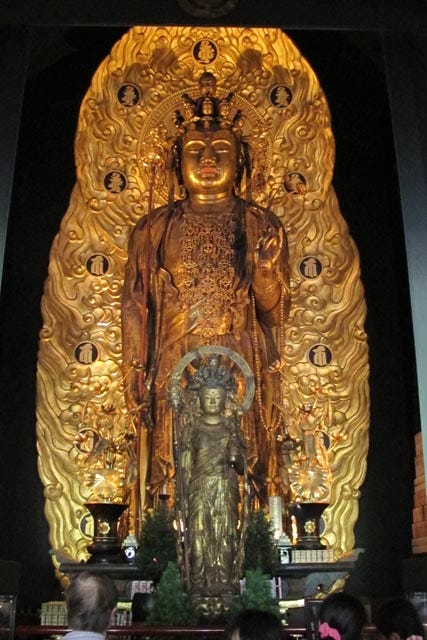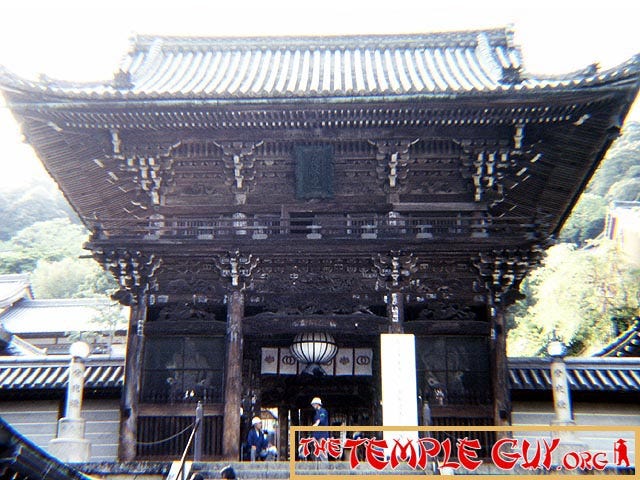Ep. 087: The Other Hase Kannon
The southern counterpart to the Great Kannon of Kamakura... plus an extra...
The Great Hase Kannon at Kamakura (very similar to the one in Nara) (Wikipedia)
Do you remember visiting the Great Kannon at Kamakura's Hase-dera in Episode 048? Well, let's visit the scene of the rest of the story, in the original Hase-dera Temple, the one down south, in this episode of
TEMPLE TALES!
Some "History"
Recapping what we said in Episode 048, there was once a monk named Tokudo Shonin, who (as we learned even further back, in Episode 044) founded the Saigoku Pilgrimage after falling ill and visiting hell. Emma-O, King of Hell, asked him to provide the people a means of attaining holiness, as the infernal realms were getting overcrowded!
Yet another great gateway
But Tokudo (Shonin just means "holy man" or "saint") was also abbot of Hase-dera in Nara, and it happened like this: In 721 he had obtained an enormous camphor tree and ordered two statues of the Eleven-Headed Kannon to be carved from it. One was cast into the sea; that is the Kannon at Kamakura. But the other he kept for his own temple, the one we'll visit today.
Lafcadio Hearn told the story far better than I can in Chapter Four of his Glimpses of Unfamiliar Japan: First Series. I encourage you to read it there (or read the long-ish excerpt in my Episode 048), but essentially, Tokudo had seen "a wonderful radiance," an unexpected light (as so often happened in the region; but imagine the effect on someone from a culture without electricity!) and, following this, discovered a fallen tree with a heavenly scent. Praying, he inadvertently invoked a magical old couple, who offered to carve the tree. They carved "two marvellous statues of Kannon made perfect before him," identified themselves as Shinto gods, and--transfigured--"ascended to heaven and vanished from the sight of Tokudo Shonin."






